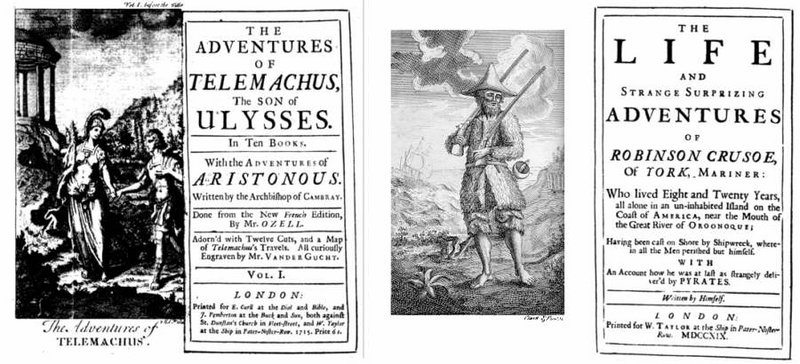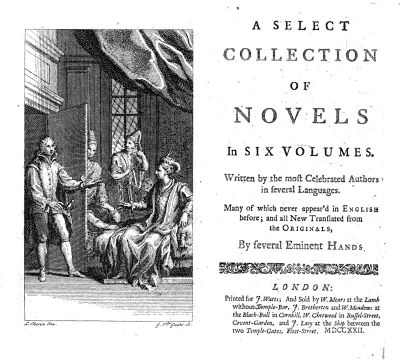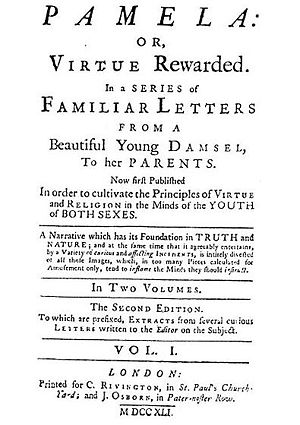Novel
2008/9 Schools Wikipedia Selection. Related subjects: Literature types
| Literature |
|---|
|
Major forms
|
|
Epic · Romance · Novel |
| Media |
|
Performance ( play) · Book |
| Techniques |
|
Prose · Poetry |
| History and lists |
|
Basic topics · Literary terms |
| Discussion |
|
Criticism · Theory · Magazines |
A novel (from, Italian novella, Spanish novela, French nouvelle for "new", "news", or "short story of something new") is today a long written, fictional, prose narrative. The seventeenth-century genre conflict between long romances and short novels, novellas, has brought definitions of both traditions into the modern usage of the term.
History
World wide view
The modern novel can no longer be seen as an entirely European product. It is not – as critics like Ian Watt had pointed out in the 1950s – an early 18th century invention of English literature. The era of "romances" had ended before 1719 and "novels" had been appreciated as an alternative as early as 1613, the date when the Novelas Exemplares were published. Extended fictions with modern historical backgrounds were fashionable on the French international market before Robinson Crusoe appeared. A field of diverse sources and parallel histories had been established by that time. Pierre Daniel Huet's ground breaking study Traitté de l'origine des romans (1670) took the first steps looking for origins of the novel in the ancient Mediterranean cultures and in medieval Europe, in the epic tradition and in the traditions of shorter fictions.
Our notion of the epic tradition has grown since then: the Sumerian Epic of Gilgamesh, Indian epics such as the Ramayana and Mahabharata were unknown in Europe in the 1670s as were the European epic tales. Huet already noted Petronius' Satyricon, the incredible stories of Lucian of Samosata, and Lucius Apuleius' proto- picaresque The Golden Ass and a heroic strain with the romances of Heliodorus and Longus. The ancient Greek romance was revived by Byzantine novelists of the twelfth century. All these traditions were rediscovered in the 17th and 18th centuries where they influenced the modern book market. The novella is, however, related to universal oral traditions. Jokes would fall into a broad history of the "exemplary story" which gave rise to the more complex form of novelistic story telling. Fiction has its still wider context with the Bible being filled with similes and stories to be interpreted. Fiction is, as Huet noted, a rather universal phenomenon, though not a phenomenon with a single cause.
The history of prose fiction remains heterogeneous with parallel developments all around the globe. Early examples of prose novels include The Tale of Genji by Murasaki Shikibu in the 11th century, Philosophus Autodidactus by Ibn Tufail in the 12th century, Theologus Autodidactus by Ibn al-Nafis in the 13th century, and Romance of the Three Kingdoms by Luo Guanzhong in the 14th century. The inventions of paper and movable letters became, however, key factors the genre needed to step from isolated traditions into a market of exchange and awareness of the genre. Spanish, French, German, Dutch and English became the first languages of the new market. The national risings of the USA, Russia, Scandinavia and Latin America widened the spectrum in the 19th century. A wave of new literatures has brought forth novels with Asian and African authors since then. Their novels quickly became contributions to the history of world literature in the 19th century and in the 20th century were nourished with international awards such as the Nobel Prize in Literature; they make it problematic for any nation to remain unvoiced and unheard of. The novel has become a medium of national awareness on a global scale. The establishment of literature as the realm of fictions to be discussed, a 19th century development, became the moving force behind this development.
The age of manuscript circulation
Anglophone histories of the novel have to cope with the special generic evolution which brought the word "novel" into the context of extended prose fictions.
- The period 1200-1750 saw a rise of the originally short piece of fiction rivalling then with the original "romance" (the epic-length performance). The rivalry was European, yet only the Spanish and the English went one step further and allowed the word novel (Spanish: novela) to become their regular term for fictional narratives.
- The period 1700-1800 saw a reversal, a rise of "new romances" in reaction to the production of potentially scandalous novels. The movement encountered a complex situation in the English market, where the term "new romance" could hardly be ventured, after all the novel had done to transform taste. The new genre adopted the name novel with the effect that the English (and Spanish) eventually needed a new word for the original short performance: The term novella was created to fill the gap in English; " short story" brought a further refinement.
The meaning of the term "romance" changed within the same complex process, becoming the word for a love story whether in life or fiction. Other meanings include the musicologist's genre " Romance" of a short and amiable piece, or Romance languages for the languages derived from Latin (French, Spanish, Italian, Romanian, and Portuguese).
Romance, 1000-1500
The word romance seems to have become the label of romantic fictions because of the "Romance" language in which early (11th and twelfth century) works of this genre were composed. The most fashionable genres developed in southern France in the late twelfth century and spread east- and northwards with translations and individual national performances. Subject matter such as Arthurian knighthood had already at that time traveled in the opposite direction, reaching southern France from Britain and French Brittany. As a consequence, it is particularly difficult to determine how much the early "romance" owed to ancient Greek models and how much to northern folkloric verse epics such as Beowulf and the Nibelungenlied.
The standard plot of the early romance was a series of adventures. Following a plot framework as old as Heliodorus, and so durable as to be still alive in Hollywood movies, a hero would undergo a first set of adventures before he met his lady. A separation would follow, with a second set of adventures leading to a final reunion. Variations kept the genre alive. Unexpected and peculiar adventures surprised the audience in romances like Sir Gawain and the Green Knight (Gauvin et le Chevalier vert). Classics of the romance developed such as the Roman de la Rose, written first in French, and famous today in English thanks to the translation by Geoffrey Chaucer.
These original "romances" were verse works, adopting a "high language" thought suitable for heroic deeds and to inspire the emulation of virtues; prose was considered "low", more suitable for satire). Verse allowed the culture of oral traditions to live on, yet it became the language of authors who carefully composed their texts — texts to be spread in writing, thus to preserve the careful artistic composition. The subjects were aristocratic. The textual tradition of ornamented and illustrated handwritten books afforded patronage by the aristocracy or by the monied urban class developing in the thirteenth and fourteenth centuries, for whom knight errantry most clearly was a world of fiction and fantasy.
The fourteenth and fifteenth centuries saw the emergence of the first prose romances along with a new book market. This market had developed even before the first printing facilities were introduced: prose authors could speak a new language, a language avoiding the repetition inherent in rhymes. Prose could risk a new rhythm and longer thoughts. Yet it needed the written book to preserve the coincidental formulations the author had chosen. While the printing press was yet to arrive, the commercial book production trade had already begun. Legends, lives of saints and mystical visions in prose were the main object of the new market of prose productions. The urban elite and female readers in upper class households and monasteries read religious prose. Prose romances appeared as a new and expensive fashion in this market. They could only truly flourish with the invention of the printing press and with paper becoming a cheaper medium. Both of these achievements arrived in the late fifteenth century, when the old romance was already facing fierce competition from a number of shorter genres; most salient among these genres was the novel, a form that arose in the course of the fourteenth century.
Early novel, 1000-1600
It is difficult to give a full catalog of the genres that finally culminated - with the works of Boccaccio, Geoffrey Chaucer, Niccolò Machiavelli and Miguel de Cervantes - in the original "novel", the production today generally categorized under the term "novella".
The early "novel" contrasting the early "romance" was basically any story told for its spectacular or revealing incidents. The original environment - living on with the typical frame settings - was the entertaining conversation. Stories of grave incidents could just as well augment sermons. Collections of examples facilitated the work of preachers in need of such illustrations. A fable could illustrate a moral conclusion; a short historical reflection could do the same. A competition of genres developed. Tastes and social status were decisive, if one believes the medieval collections. The working classes loved their own brand of drastic stories: stories of clever cheating, wit and ridicule levelled against hated social groups (or competitors among the storytellers). Much of the original genre is still alive with the short joke told in everyday life to make a certain humorous point in a conversation.
Artistic performances included the story within a story: situations in which a series of stories was allegedly told. They rejoiced in a broad pattern of tastes and genres. The Canterbury Tales constitute a classic example, with their noble storytellers fond of "romantic" stories and their lower narrators preferring stories of everyday life. The genre did not have its own generic term. "Novel" would simply denote the novelty of the accident narrated. The inclusion of frame stories, however, brought an awareness of the fact that genres were developing in this field.
The main advantage of the background story was the justification it put into the hands of the actual authors such as Chaucer and Boccaccio. Romances afforded lofty language and relied on an accepted notion of what deserved to be read as high style. Yet what if the taste in moral teachings and poetry changed? Romances quickly became outdated. Stories of cheats and pranks, illicit love affairs, and clever intrigues in which certain respectable professions or the citizens of another town were made fun of were, on the other hand, neither morally nor poetically justifiable. They carried their justification outside. The storyteller would offer a few words explaining why he thought this story was worth telling. Again, Chaucer's Canterbury Tales afford the best examples: the real author could tell stories without any other justification than that this story gave a good portrait of the person who told it and of his or her taste, and that justification would remain stable throughout history.
If lofty performances grew tedious - as they did in the fourteenth and fifteenth centuries with the old plots never leading to newer ones - the collections of tales or novels made it easy to criticise the lofty performances and to reduce their status: one of the group of narrators (created by the actual author) could start with the romantic story only to be interrupted by the other narrators listening within the story. They might silence him or order him to speak a language they liked, or they might ask him to speed up and to make his point. The result was a rise of the short genre. The steps of this development can be traced with the short story gaining in appreciation and value to rival romances in new versified collections at the end of the fourteenth century.
The novel on the early market of printed books, 1480-1800
Conflict between novels and romances, 1600-1700
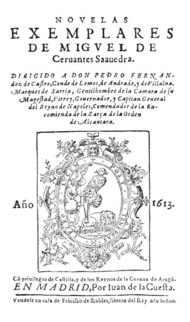
The invention of printing subjected both novels and romances to a first wave of trivialization and commercialization. Printed books were expensive, yet something people would buy, just as people still buy expensive things they can barely afford. Alphabetization, or the rise of literacy, was a slow process when it came to writing skills, but was faster as far as reading skills were concerned. The Protestant Reformation created new readers of religious pamphlets, newspapers and broadsheets.
The urban population learned to read, but did not aspire to participation in the world of letters. The market of chapbooks developing with the printing press comprised both romances and short histories, tales and fables. Woodcuts were the regular ornament and they were offered without much care. A romance in which the heroic knight had to fight more than ten duels within a few pages could get the same illustration of such a fight again and again if the printer's stock of standard illustrations was small. As their stocks grew, printers repeated the same illustrations in other books with similar plots, mixing these illustrations without respect to style. One can open eighteenth century chapbooks and find illustrations from the early years of printing next to much more modern ones.
Romances were reduced to cheap and abrupt plots resembling some early comic books; neither were the first collections of novels necessarily prestigious projects. They appeared with an enormous variety from folk tales over jests to stories told by Boccaccio and Chaucer, now venerable authors.
A more prestigious market of romances developed in the sixteenth century, with multi-volume works aiming at an audience which would subscribe to this production. The criticism leveled against romances by Chaucer's pilgrims grew in response to both trivialization and the extended multi-volume "romances". Romances like the Amadis de Gaula led their readers into dream worlds of knighthood and fed them with ideals of a past no one could revitalize, or so the critics complained.
Italian authors like Machiavelli were among those who brought the novel into a new format: while it remained a story of intrigue, ending in a surprising point, the observations were now much finer: how did the protagonists manage their intrigue? How did they keep their secrets, what did they do when others threatened to discover them?
The whole question of novels and romances became critical when Cervantes added his Novelas Exemplares (1613) to the two volumes of his Don Quixote (1605/15). The famous satirical romance was levelled against the Amadis which had made Don Quixote lose his mind. Advocates of the lofty romance, however, would claim that the satirical counterpart of the old heroic romance could hardly teach anything: Don Quixote neither offered a hero to be emulated nor did it satisfy with beautiful speeches; all it could do was to make fun of lofty ideals. The Novelas Exemplares offered an alternative to the heroic and the satiric modes, yet critics were even less sure what to make of this production. Cervantes told stories of adultery, jealousy and crime. If these stories were to give examples, they gave examples of immoral actions. The advocates of the "novel" responded that their stories taught with both good and bad examples. The reader could still feel compassion and sympathy with the victims of crimes and intrigues, if evil examples were to be told.
The alternative to dubious novels and satirical romances were better, lofty romances: a production of romances modeled after Heliodorus arrived as a possible answer with excursions into the bucolic world. Honoré d'Urfé's L'Astrée (1607-27) became the most famous work of this type. The criticism that these romances had nothing to do with real life was answered through the device of the roman à clef (literally "novel with a key") — one that, properly understood, alludes to characters in the real world. John Barclay's Argenis (1625-26) appeared as a political Roman à clef. The romances of Madeleine de Scudéry gained greater influence with plots set in the ancient world and content taken from life. The famous author told stories of her friends in the literary circles of Paris and developed their fates from volume to volume of her serialized production. Readers of taste bought her books, as they offered the finest observation of human motives, characters taken from life, and excellent morals regarding how one should and should not behave if one wanted to succeed in public life and in the intimate circles she portrayed.
The novel went its own way: Paul Scarron (himself a hero in the romances of Madeleine de Scudéry) published the first volume of his Roman Comique in 1651 (successive volumes appeared in 1657 and, by another hand, in 1663) with a plea for the development Cervantes had introduced in Spain. France should (as he wrote in the famous twenty first chapter of the Roman Comique ) imitate the Spanish with little stories like those they called "novels". Scarron himself added numerous of such stories to his own work.
Twenty years later Madame de La Fayette took the next decisive steps with her two novels. The first, her Zayde (published in 1670 together with Pierre Daniel Huet's famous Treatise on the Origin of Romances), was a "Spanish history". Her second and more important novel appeared in 1678: La Princesse de Clèves proved that France could actually produce novels of a particularly French taste. The Spanish enjoyed stories of proud Spaniards who fought duels to avenge their reputations. The French had a more refined taste with minute observation of human motives and behaviour. The story was firmly a "novel" and not a "romance": a story of unparalleled female virtue, with a heroine who had had the chance to risk an illicit amour and not only withstood the temptation but made herself more unhappy by confessing her feelings to her husband. The gloom her story created was entirely new and sensational.
The regular novel took another turn. The late seventeenth century saw the emergence of a European market for scandal, with French books now appearing mostly in the Netherlands (where censorship was liberal) to be clandestinely imported back into France. The same production reached the neighboring markets of Germany and Britain, where it was welcomed both for its French style and its predominantly anti-French politics. The novel flourished in this market as the best genre to purport scandalous news. The authors claimed the stories they had to tell were true, told not for the sake of scandal but only for the moral lessons they gave. To prove this, they fictionalized the names of their characters and told these stories as if they were novels. (The audience played its own game in identifying who was who). Journals of little stories appeared — the Mercure Gallant became the most important. Collections of letters added to the market; these included more of these little stories and led to the development of the epistolary novel in the late seventeenth century.
The novel had interested the English audience ever since Chaucer's days, it had been read in translations of Spanish and French novels throughout the 17th century. In the late 1680s English authors decided to create a modern English equivalent. Aphra Behn and William Congreve adopted the old term and wrote new "novels".
Embedded in the market of histories: 1650-1730
The early modern print market was roughly split into the fields of theology, history (and politics), the sciences, and poetry and plays. 17th century term catalogues would list fictions under the second rubric of “History and politicks”. The overall production of prose fictions in English remained between 1660 and 1750 at about 20-40 titles per year (including translations and reprints, the total number of titles varied from 1,000 to 2,500 titles per year during this period). Novels and romances appeared among histories of the Roman empire, party propaganda, dubious scandalous revelations, travelogues and political memoirs. The vicinity of true and fictitious materials was constantly criticized by serious historians: Fictions were "lies" and therefore hardly justifiable at all. Learned criticism was at the same moment in a precarious situation since history itself did not claim any other justification than to teach with lessons provided by examples. If one modified the examples to improve their moral value one could just as well compose fictions to instruct and delight.
Romancers and novelists responded to the argument that they spread lies with hints at Aristotle's Poetics according to which prose fiction might be just a special sort of poetry comprising productions of a high and a low genre. The modern novel could under these circumstances be called a genus medium. Romances taught through heroes and anti-heroes, novels through the very plots, the "intrigues", they related. The production of fictions remained embedded in the field of histories as the poetic principles could easily recycled and utilized in on the special market of unreliable and scandalous histories.
| 3.1 Heroical Romances: Fénelon's Telemach (1699) |
||||
| 1 Sold as romantic inventions, read as true histories of public affairs: Manley's The New Atalantis (1709) |
2 Sold as romantic inventions, read as true histories of private affairs: Menantes' Satyrischer Roman (1706) |
3.2 Classics of the novel from the Arabian Nights to M. de La Fayette's Princesse de Clèves (1678) |
4 Sold as true private history, risking to be read as romantic invention: Defoe's Robinson Crusoe (1719) |
5 Sold as true public history, risking to be read as romantic invention: La Guerre d'Espagne (1707) |
| 3.3 Satirical Romances: Cervantes' Don Quixote (1605) |
||||
Prefaces and title pages of 17th and early 18th century fiction referred to a pattern of options under which fiction spread into history. Histories could claim to be romances, but threaten to relate true events. Delarivier Manley wrote the most famous of these publications with her The New Atalantis (1709), a title which alarmed the censors: The author had hawked stories discrediting the ruling Whigs, and left the discredited politicians in the dilemma to either open a libel case against Manley or to ignore the provocation — the libel case option required an acknowledgment that the stories related did actually not at all happen on the famous fairytale island Atalantis. Delarivier Manley escaped the interrogations unscathed and continued her work with three more volumes of the same ilk. Private stories appeared on the same market, creating a different genre of personal love and public battles over lost reputations.
On the other hand existed a market of titles which claimed to be strictly non-fictional, again with the two options of private and public subject matter to be distinguished. The preface to Daniel Defoe's Robinson Crusoe stated the genre-option within the pattern wit the greatest clarity: "Sold as true private history, risking to be read as romantic invention", so the formula the later prefaces repeated:
IF ever the Story of any private Man's Adventures in the World were worth making Pvblick, and were acceptable when Publish'd, the Editor of this Account thinks this will be so.
The Wonders of this Man's Life exceed all that (he thinks) is to be found extant; the Life of one Man being scarce capable of a greater Variety.
The Story is told with Modesty, with Seriousness, and with a religious Application of Events to the Uses to which wise Men always ap[p]ly them (viz.) to the Instruction of others by this Example, and to justify and honour the Wisdom of Providence in all the Variety of our Circumstances, let them happen how they will.
The Editor believes the thing to be a just History of Fact; neither is there any Appearance of Fiction in it: And however thinks, because all such things are dispatch'd [later editions: disputed], that the Improvement of it, as well as the Diversion, as to the Instruction of the Reader, will be the same; and as such he thinks, without farther Compliment to the World, he does them a great Service in the Publication.
Robinson Crusoe (1719) claimed to be "true history of fact" — yet it hardly appeared as such: Not only did the "editor" address readers about to discredit Crusoe. The very design of the title did not allude to a serious travelogue (nor to a novel), but to the one title educated readers throughout Europe celebrated as a "new romance": Fénelon's Telemachus (1699/1700) was a respectable prose epic rivaling if not surpassing the epics Homer and Virgil had written. Defoe's publisher overbid Fénelon's English publisher in the detailed offer he made:
Crusoe's travelogue did, at the same moment not fall into the category of rogue stories and satirical romances. The alleged author had fallen against his will into a life of otherwise romantic adventures. He had survived them as a simple sailor from York — with exemplary heroism. The title became with these promises a neighbour of the histories of similar verisimilitude which had dived into the overtly political over the past decades. Gatien de Courtilz de Sandras (1644-1712) had become the most important author in this field with his first version of d'Artagnan's story, told again more than a century later by Alexandre Dumas the elder. Witty, and a distant precursor of Ian Fleming's fictional James Bond, is another book allegedly by his hand: La Guerre d'Espagne (1707), the story of a disillusioned French spy, who gave insight into French politics, and into his own love affairs, with little intrigues he managed wherever he had to do his jobs. Fact and fiction were mixed in all these titles, to the point that one could no longer tell where the author had invented and where he had simply betrayed secrets.
Journalists of the age defended the dubious production relying on an enlightened audience able to read with the necessary grain of skepticism if not with amusement if things became really incredible. The defendants of public morals demanded an improved production - a strictly fictitious production designed to improve the reader.
The novel as "literature" — the 18th and 19th century market reform
The moment for novels and romances to leave the market of potentially scandalous histories and to become "literature" (in a new sense of the word: fiction, supposedly now the best production a nation could conceive) — came in the second half of the 18th century. The development had been prepared by Pierre Daniel Huet's Traitté de l'origine des romans (1670), the short history of prose fiction which had first formulated the future canon of "literature". The French theologian had dared to praise fictions: One could interpret novels and romances and analyse them as works which uniquely reflected the cultures and times which had first produced and consumed them.
The interpretation and analysis of classics became a new practice among readers of the belles lettres. It made a vast difference whether one read romances to get lost in dream worlds (so the warning of the ancient critics against romances), whether one read them to take part in latest scandals (as readers of novels did), or whether one read the same to better understand the Greek, Roman or the Muslim frame of mind. The Book of One Thousand and One Nights (first published in Europe from 1704 to 1715 in French, and translated immediately from this edition into English and German) was immediately read as a contribution to Huet's history of romances.
Classics of the novel: a morally justified production discovers the nation
The reform of the early eighteenth century market of novels was not induced by Defoe's Robinson Crusoe (1719), a title which aroused a scandal of its own dimension with its claims of historical truth and its reprint in a newspaper edition designed to support this grotesque claim of veracity. It came with the establishment of classics of modern fiction: The early 1720s saw the edition of the English Select Collection Novels in six volumes (1720-22). It contained the finest European "novels" from Machiavelli's to Marie de LaFayette's performances. Aphra Behn's prose fictions had appeared as "novels" in the 1680s and were reprinted in collections of her works which turned the scandalous authoress into a modern classic. Fénelon's Telemachus (1699/1700) had become a classic within three years after its publication. The works of Petronius and Longos appeared in the early 18th century, equipped with prefaces which praised Huet and the elegant new audience of the " belles lettres" or "polite literature" to use the English term.
The first wave of classics of fiction was, throughout Western Europe, an international affair. Readers all over Europe read prose fiction both for its potential to create local scandal and for its readiness to explore the farthest past and life in other countries. Huet's Treatise had provided a world history of fiction, it had on the other hand inspired a comparison of novels and cultures. French novels reflected a specific French interaction of the sexes. Spanish novels followed their own standards of honour. Ancient novels gave us a picture of a civilization of fundamentally different moral standards.
The second half of the 18th century was not only marked by a reevaluation of fiction which turned the novel from lie and libel into a culturally significant production. The new evaluation hand in hand with the search for national debates capable of involving the wider public. The discussion of "literature" hosted the new debate. The spectrum of "literary" genres supplanted the old spectrum of "poetic" genres in a move designed to exclude the opera and to include prose fiction. The production in the literary genres followed, so the new theory, the development of the languages - it hence had to be rather national than international: Literature, so the new theory, developed in each language under the protection of the nation (if the nation protected its language and art). A sudden interest in the Middle Ages came along with the new formation of literature. Scottish nationalism became a topic of debate with the publication of the Ossian-"translation" in the 1760s (the translation was actually a modern English composition, the "original" epic remained lost). The modern European novel received a new past with editions of medieval romances, chapbooks and selected 17th century romances and novels which could pose as ancestors of the present production. First histories of literature focused on the evolution of German literature in the 1830s, French histories of literature followed the new model. The first History of English literature designed to cover prose fiction and poetry under the new term of "literature" appeared in 1864 with Hippolyte Taine's Histoire de la littérature anglaise, it was immediately translated into English with a preface looking back on the recent reshaping the term literature had undergone in Germany and France. English literature as a topic the national curriculum was a late comer. Germany and France, the two countries who had stepped through a process of secularization at the turn from the 18th into the 19th century had adopted the new literary heritage sooner in an attempt to define a body of texts the national school systems could teach to understand and interpret properly. Nationwide debates of literature took care of the canon of greatest works to be discussed and of interpretations these titles should find — a question of wider importance with all the interest groups who could move their own debates into the new discussion of literature.
Designed to be discussed: modern classics, 1740-1850
The early eighteenth century market for classics of the novel had already inspired the first living authors to aim at personal fame on the developing market. Delarivier Manley, Jane Barker and Eliza Haywood had followed their famous French models Madame d'Aulnoy and Anne-Marguerite Petit DuNoyer and switched from anonymous to clear name publication to claim their part of the appreciation their books found. The anonymous publication had been the standard for the past centuries.
Most new novels and romances continued to be published anonymously. Authors hided and waited for the best moment appear in person. The anonymous publication created its usual suspense — what if Richardson's Pamela was not invented but a real person? The title page of Pamela or Virtue Rewarded left, however, the market Robinson Crusoe had addressed. The "narrative" which wanted to be "founded in truth and nature" was at the same moment, so the title, deliberately designed to move young readers towards better precepts of virtue. Fiction had become an accepted medium authors could be expected to use to improve morals.
Books like Richardson's Pamela or Virtue Rewarded (1741), Henry Fielding's The History of Tom Jones, a Foundling (1759) or Rousseau's Émile, ou De l'éducation (1762) were openly published in expectation of wide debates. The novel tradition with its double titles "[...], or [...]" inspired some of the new titles to openly propose the debate the title at hand should find. The production was otherwise a swing-back into the realm of romances turning to full life accounts and a new brand of reals heroes to be developed with the plots. Long performances could be published again, the short novella underwent a secret crisis before late 18th century authors revived the genre with a new production of titles extended narratives, the term " novella" was now established separate this production from epic performances.
The legitimation of fiction as part of the "belles lettres" or "literature" in the new sense of the word led to reformation of the whole market. The old divide between chapbooks and elegant books of the "belles lettres" collapsed. The old chapbooks disappeared. 19th century scholars were eager to publish the last of these titles under the assumption that they reflected the true roots of fiction in the heart of the people. "Volksbücher", books of the people, became the German and Dutch term denoting the peculiar low production. The new market divide created "literature proper" ("Literature with a capital L") with works discussed in literary journals, in school classes and university seminars, and it created a new low market with fiction "unworthy to be discussed".
The high market of works whose literary achievements attracted analytical readers became a ground on which entirely new genres could be developed. Works which played with the art of fiction, with the pure pleasure of constructing and deconstructing a narrative appeared: Laurence Sterne’s Tristram Shandy became the leading work in this new metafictional world of writing experiments.
The public debate inspired, more important, experiments in character and nature of the individuals portrayed and reading these novels. The " novel of sentimentalism" discredited the early eighteenth century heroine who had boldly protected her reputation and her personal plans the latter if necessary in the dangerous world of secret intrigues against her rivals, her parents, if not her husband. Mid-18th century heroines developed a feeling of modesty. They suffered if they had to keep secrets and felt an urge to confess. They searched for friends and intimacy, for situations in which they could freely open their hearts and speak of their deepest wishes.
Had the early 18th century punished the heroine who trusted in others — her parents would marry her off to an old man of their choice if she did not cross their plans — the world of mid 18th century fiction changed. When it came to secret wishes one was suddenly well advised to confide in parents and friends. The weak heroine was the one who met an environment of compassion. Instead of making their affairs a public entertainment, the new heroes and heroines developed an intimacy into which the novel (read by readers in privacy) alone could take a careful look.
The first wave of novels proposing the new individual (and the new caring society it needed) created female heroines. The second wave turned to men. Heroes like Henry Mackenzie's Man of Feeling (1771) developed weak sides. They did not become satirical heroes once they displayed these personal weaknesses, on the contrary they could as their female counterparts hope to find a world of understanding. Sympathy and pity became the ingredients of the new production of novels which claimed to finally explore the individual and its nature.
A counterculture grew with this production: a culture of new "romantic" individuals too strong, too natural to be thus severely civilized and domesticated. Johann Wolfgang von Goethe's The Sorrows of Young Werther (1774) was at the forefront of the new movement. The radical who could break will all norms became a role model on a market of fictions which was from now onwards supposed to reflect society with all its movements and groups.
19th century
At the beginning of the seventeenth century the novel had been a genre of realism fighting the romance with its wild fantasies. The novel had turned first to scandal before undergoing reform over the last decades of the eighteenth century. Fiction eventually became the most honourable field of literature. This development culminated in a wave of novels of fantasy at the turn of the nineteenth century. Sensibility was heightened in these novels. Women, overwrought and prone to imagining worlds beyond their appointed one, became the heroines of the new world of "romances" and " gothic novels" creating stories in distant times and places. Renaissance Italy was a favorite setting of the gothic novel.
The classic gothic novel is Ann Radcliffe’s The Mysteries of Udolpho (1794). As in other gothic novels, the notion of the sublime is central. Eighteenth-century aesthetic theory held that the sublime and the beautiful were juxtaposed. The sublime was awful (literally, "awe-inspiring") and terrifying while the beautiful was calm and reassuring. Gothic characters and landscapes rest almost entirely within the sublime, with the heroine the great exception. The "beautiful" heroine's susceptibility to supernatural elements, integral to these novels, both celebrates and problematizes what came to be seen as hypersensibility.
At the beginning of the nineteenth century, the overwrought emotions of sensibility, as expressed through the gothic sublime, had run their course. Jane Austen with Northanger Abbey (1803) parodied the gothic novel, reflecting its death. Moreover, while sensibility did not disappear, it was less valued. Austen introduced a different style of writing, the " comedy of manners". Her novels often are not only funny, and particularly likely to satirize individuals of high social status, but they also display a wariness of city influences which are often portrayed as having a tendency to corrupt established social values. Her best known novel, Pride and Prejudice (1811), is her happiest, and has been a blueprint for much subsequent romantic fiction. Austen's novels still retain a wide following, despite the distance between their heroines' dilemmas and those of the reader today.
Separation of high and low production
The market for novels in the nineteenth century was clearly separated into "high" and "low" production. The new high production can best be viewed in terms of national traditions. The low production was organized rather by genres in a pattern deriving from the spectrum of seventeenth- and eighteenth-century genres.
1. The novel as a literary production, promoted by critical discourse
| Spanish Literature | French Literature | German Literature | English Literature | ...by language and nation |
2. Popular Fiction, not promoted by criticism
| 1 The modern roman à clef (a recent example is Primary Colors) |
2 Sex, including soft "romantic" pornography for the female audience |
3 Historical settings (the tradition of heroic romances), crime (the tradition of the seventeenth century novel) |
4 Adventure, science fiction |
5 Espionage, conspiracy |
The position of authors attained its modern form with the establishment of this pattern. The modern author can either aim at a broad market or write with an eye to serious critical discussion. The borders between the realms have developed differently in different nations. While this modern market divide came relatively late to the English-speaking world, Germany and France had an earlier and much stronger interest in creating national literatures — France in the wake of the French Revolution, Germany during its mid-19th century unification. Both of these nations experienced a division between high literature — that is, the literature of ruling social group, discussed in schools and newspapers, and celebrated in public life — and a low production — not worthy to be mentioned in such circles — while the vast commercial market of the English-speaking world still resisted this artificial divide.
The novel proved to be a medium for a communication both intimate (novels can be read privately whereas plays are always a public event) and public (novels are published and thus become a matter touching the public, if not the nation, and its vital interests), a medium of a personal point of view which can get the world into its view. New modes of interaction between authors and the public reflected these developments: authors giving public readings, receiving prestigious prizes, giving interviews in the media and acting as their nations' consciences. This concept of the novelist as public figure arose in the course of the nineteenth century.
20th century
- See Modernist literature and Postmodern literature
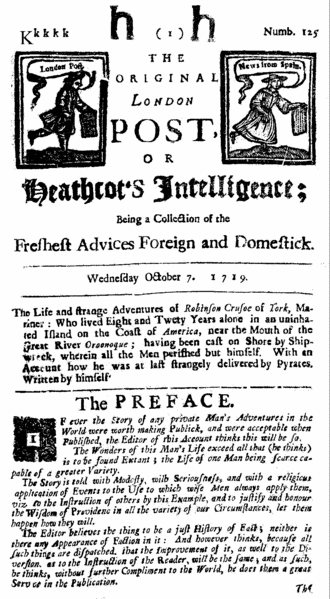
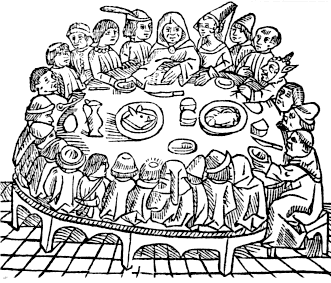
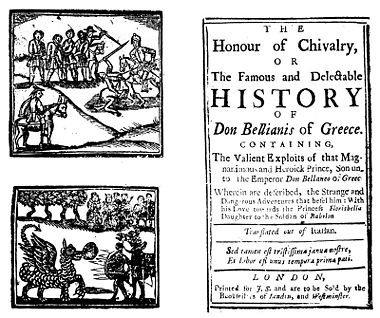
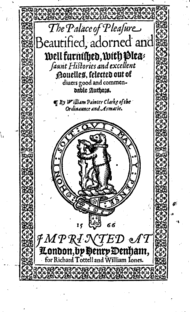
![The [...], or [...] formula promising an example; here, William Congreve's Incognita (1692) promising a reconciliation of love and duty.](../../images/816/81677.png)
